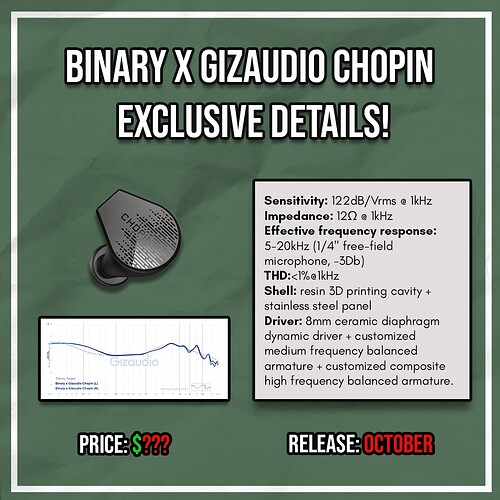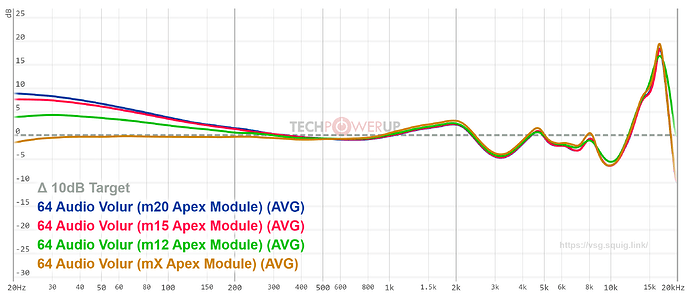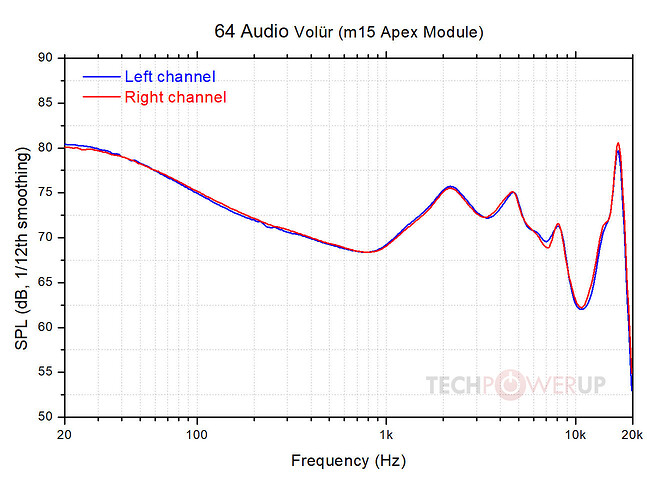How does this work? Are they checking every IEM with a no namr BA to see if it’s bellsing when it comes to the US?
The 2k peak followed by gradual decent reminds me of the Eru
I do not know how it works in reality but thats on paper at least.
The Ultimate Guide to IEM Dynamic Driver Materials
Hello audiophiles! If you’re like me, you’ve trudged through the labyrinth of IEM reviews, technical specs, and subjective opinions in pursuit of the ultimate auditory experience. You’re likely well-versed in frequency responses, transient details, and decay. But there’s one vital element that’s all too often glossed over in reviews—Sonority.
What is Timbre?
First off, let’s talk timbre—the unique “flavor” of sound that distinguishes one driver material from another. It’s what gives individual sounds their characteristic brightness, warmth, or fullness. It’s the subtlety that makes a piano not just a piano but that particular piano.
What is Sonority and Why is it Often Missing in Reviews?
Now, let’s get to the meat of the matter—Sonority. Sonority deals with the richness, fullness, and depth of your listening experience. Think of it as the “body” of the sound, where timbre is the individual “flavor notes.” While plenty of reviews delve into the brightness or neutrality of IEMs, very few touch upon how the sound feels—its roundness, its depth, and its ability to fill the auditory space in a satisfying way. This lack of focus on sonority in most reviews is a disservice, as it plays a crucial role in how we experience and interact with sound.
Personal Endorsement: The Sonorous Excellence of LCP
Before we dive deep, I want to share my personal experience with Liquid Crystal Polymer (LCP) drivers. Among the different materials I’ve tried, LCP stands out as the most sonorous. The richness and depth it brings to the table have significantly elevated my listening experience. If you haven’t tried IEMs with LCP drivers yet, I highly recommend giving them a shot.
A Note on Tuning
It’s crucial to mention that all these characteristics are generalized and raw. The actual sound signature of an IEM will vary greatly depending on the tuning process, so take these descriptions as a starting point rather than definitive conclusions.
So, why is sonority missing in most discussions? Maybe because it’s tough to quantify or perhaps it’s not as glamorous as other features. Whatever the reason, we’re filling that gap today.
In this comprehensive guide, we’ll dissect the specific characteristics of various dynamic driver materials, keeping a keen eye on that often-overlooked aspect of “sonority.”
LCP (Liquid Crystal Polymer): The Swiss Army Knife of drivers, for when you’re too high-brow to make a choice
Frequency Ranges:
- Bass: Deep and impactful, providing a robust low-end.
- Mids: Well-balanced and articulate.
- Highs: Extended and crystal-clear, avoiding sibilance.
Timbre:
- Natural, with a balanced approach to the full spectrum of sound.
Transient Detail:
- Exceptional, picking up on even the smallest nuances in a recording.
Decay:
- Fast, but not so much that it robs music of its natural resonance.
Sonority:
- Highly sonorous, offering a rich and full sound that adds spatial depth and complexity.
Vocals:
- Clear, without overshadowing the instrumental backdrop.
Catchphrase:
- “LCP: Because you’re too cultured for basic drivers.”
Titanium: Delivering the kind of treble that’ll make your grandma think she can hear again
Frequency Ranges:
- Bass: Powerful but controlled, avoiding bloat.
- Mids: Slightly recessed, often giving the spotlight to bass and treble.
- Highs: Bright and sparkling, sometimes bordering on sibilant.
Timbre:
- Bright, often with a metallic tinge.
Transient Detail:
- Good, but may miss out on some of the finer nuances.
Decay:
- Medium, leaving a bit of room for natural resonance.
Sonority:
- Spacious, but may lack a bit in emotional depth.
Vocals:
- Can be slightly thin, particularly if not well-tuned.
Catchphrase:
- “Titanium: For when your ears want to headbang.”
Biocellulose: Because you fancy yourself an organic hipster—even in the audio world
Frequency Ranges:
- Bass: Warm and textured, not overly punchy.
- Mids: Full and rich, tending towards a natural presentation.
- Highs: Smooth and relaxed, not fatiguing.
Timbre:
- Organic and warm, favoring a more analog sound.
Transient Detail:
- Good, but not its strongest point.
Decay:
- Slow, lending itself to a more natural resonance and echo.
Sonority:
- Comfortably warm, offering a soothing auditory experience.
Vocals:
- Rich and emotive, standing out in a mix without overshadowing other elements.
Catchphrase:
- “Biocellulose: The vinyl record of driver materials.”
PE (Polyethylene): The ‘dad bod’ of driver materials—comfortable, familiar, and a bit outdated
Frequency Ranges:
- Bass: Adequate but not outstanding, somewhat one-dimensional.
- Mids: Neutral, not drawing attention to themselves.
- Highs: Rolled off, avoiding harshness but sacrificing detail.
Timbre:
- Plain and straightforward, what you see is what you get.
Transient Detail:
- Mediocre, you’re not here for the subtleties.
Decay:
- Fast, with little room for natural resonance.
Sonority:
- Lacking in depth and spaciousness, more ‘in your face’ than ‘around you.’
Vocals:
- Sufficient for casual listening but don’t expect any emotional journeys here.
Catchphrase:
- “PE: When you want to say, ‘I have IEMs’ but that’s it.”
PU (Polyurethane): Because ‘easy listening’ should have been the driver’s name
Frequency Ranges:
- Bass: Balanced but not particularly distinctive.
- Mids: Adequate, providing a middle-of-the-road experience.
- Highs: Not overly extended, safe but unexciting.
Timbre:
- Neutral, without any major colorations.
Transient Detail:
- Average, it won’t blow you away but won’t disappoint either.
Decay:
- Medium, leaving some room for natural resonance.
Sonority:
- Moderately sonorous, not the focus but not entirely absent.
Vocals:
- Clean but somewhat lifeless, they get the job done.
Catchphrase:
- “PU: Because sometimes ‘adequate’ is all you need.”
PEEK (Polyether Ether Ketone): For those too refined to have an opinion
Frequency Ranges:
- Bass: Controlled yet dynamic, with a focus on quality over quantity.
- Mids: Detailed and transparent, a mid-centric audiophile’s delight.
- Highs: Extended with precision, showcasing intricate details.
Timbre:
- Slightly on the brighter side of neutral, highly resolving.
Transient Detail:
- Excellent, for those who live for micro-details.
Decay:
- Quick, offering an articulate and precise sound signature.
Sonority:
- More analytical than emotional, best suited for critical listening.
Vocals:
- Extremely clear, but might be too analytical for some.
Catchphrase:
- “PEEK: Because you read the instruction manual for fun.”
Beryllium: Because you enjoy your music one molecule at a time
Frequency Ranges:
- Bass: Deep and articulate, doesn’t hold back.
- Mids: Present but not forward, maintaining a balanced sound signature.
- Highs: Extremely extended, crisp to the point of being analytical.
Timbre:
- Bright and sparkling, like a well-cut gemstone.
Transient Detail:
- Superb, because it’s not afraid to show off.
Decay:
- Quick, with a focus on detail and resolution.
Sonority:
- Highly dynamic, offering a vivid and lively soundstage.
Vocals:
- Clean and articulate, but can sometimes be overshadowed by the extreme detail in other ranges.
Catchphrase:
- “Beryllium: Because your bank account can take it.”
Liquid Silicone: The Flexibly Firm
Frequency Ranges:
- Bass: Surprisingly punchy for its lightweight nature.
- Mids: Clear and uncolored, for those who prefer neutrality.
- Highs: Smooth but not overly extended, avoids fatigue.
Timbre:
- Neutral, very adaptable to different musical genres.
Transient Detail:
- Good, perhaps not extraordinary but certainly competent.
Decay:
- Medium, allows for some naturalness without dragging.
Sonority:
- Balanced, not particularly sonorous but neither flat nor dull.
Vocals:
- Natural and lifelike, neither too forward nor too recessed.
Catchphrase:
- “Liquid Silicone: More flexible than your last relationship.”
Mylar: The Thrifty Throwback
Frequency Ranges:
- Bass: Basic, lacks depth but functional.
- Mids: Slightly muffled, not the star of the show.
- Highs: Tends to roll off early, missing out on detail.
Timbre:
- Generally dull, lacks vibrancy and sparkle.
Transient Detail:
- Fairly poor, not for those seeking intricate details.
Decay:
- Slow, but without the benefit of adding richness or warmth.
Sonority:
- Generally flat, lacks the richness and complexity found in other materials.
Vocals:
- Muted and lifeless, usually buried in the mix.
Catchphrase:
- “Mylar: The poly-blend socks of the IEM world.”
Carbon Nanotube (CNT): Because you’re too cool for warm audio
Frequency Ranges:
- Bass: Tight and controlled, but not lacking in punch.
- Mids: Clear, detailed, and exceedingly balanced.
- Highs: Extended with crystal clarity, presenting shimmering details.
Timbre:
- Bright and energetic, but not harsh.
Transient Detail:
- Excellent, almost ruthlessly revealing.
Decay:
- Quick, allowing for articulate and clean sound.
Sonority:
- Exceptional dynamics, yielding a sound that’s both vivid and spacious.
Vocals:
- Crystal clear and engaging, but can be a bit analytical.
Catchphrase:
- “CNT: Because your ears deserve a glimpse into the future.”
Diamond-Like Carbon (DLC): Because a diamond is forever, but your ear fatigue isn’t
Frequency Ranges:
- Bass: Extremely articulate and detailed, without sacrificing depth.
- Mids: Crystal clear, with a hint of warmth for emotional impact.
- Highs: Extended and airy, without a trace of harshness.
Timbre:
- Sophisticated and refined, like a well-aged wine.
Transient Detail:
- Second to none, capturing every nuance.
Decay:
- Quick, but not at the expense of natural resonance.
Sonority:
- Exceptionally dynamic, both analytical and emotionally resonant.
Vocals:
- As close to the live experience as one could hope, astonishingly realistic.
Catchphrase:
- “DLC: When you’re too fancy for mere mortal materials.”
Graphene: Making up for a lack of personality with a surplus of technology
Frequency Ranges:
- Bass: Tight and impactful, extremely controlled.
- Mids: Neutral and transparent, perhaps leaning a bit analytical.
- Highs: Crisp and sparkly, capturing immense detail.
Timbre:
- Bright but not harsh, tuned for high resolution.
Transient Detail:
- Superb, a boon for detail seekers.
Decay:
- Quick and clean, contributing to its analytical prowess.
Sonority:
- Highly detailed and articulate, prioritizing accuracy over warmth.
Vocals:
- Impeccably clear, but may be a bit sterile for some tastes.
Catchphrase:
- “Graphene: It’s what Einstein would have used if he was into IEMs.”
PET (Polyethylene Terephthalate): The ramen noodle diet for audiophiles
Frequency Ranges:
- Bass: Moderate, provides a decent kick without stealing the show.
- Mids: Fairly neutral, tends to stay in the background.
- Highs: Good extension, but lacks some sparkle.
Timbre:
- Neutral to slightly warm, fairly uncolored.
Transient Detail:
- Good, but not exceptional—more Jack-of-all-trades than a master of one.
Decay:
- Moderate, neither too quick nor too sluggish.
Sonority:
- Balanced but lacks the special zing, a sound best described as ‘competent.’
Vocals:
- Clear, but without any particular emphasis—neither forward nor recessed.
Catchphrase:
- “PET: The Toyota Corolla of driver materials.”
PEEK + PU (Polyether Ether Ketone + Polyurethane): When your indecisiveness manifests as an audio driver
Frequency Ranges:
- Bass: Controlled yet pliable, a balanced presence.
- Mids: Highly detailed yet retaining some warmth.
- Highs: Extended and intricate, a blend of clarity and smoothness.
Timbre:
- A harmonious blend of PEEK’s brightness and PU’s warmth.
Transient Detail:
- Excellent, offering the best of both worlds.
Decay:
- Quick but with a touch of naturalness, nuanced and revealing.
Sonority:
- Engaging and dynamic, richly textured while remaining clear.
Vocals:
- Detailed and full, with a touch of warmth that adds an emotive quality.
Catchphrase:
- “PEEK + PU: Because life’s too short for boring drivers.”
Planar Magnetics: The Physics Buff
Frequency Ranges:
- Bass: Extremely controlled, capable of deep sub-bass without bloat.
- Mids: Linear and transparent, showing you the music as it was intended.
- Highs: Extended and accurate, without the harsh peaks of some dynamic drivers.
Timbre:
- Neutral and lifelike, presenting the music in its purest form.
Transient Detail:
- Outstanding, capturing even the most complex passages with ease.
Decay:
- Rapid, making for an articulate and detailed sound profile.
Sonority:
- Full-bodied and spacious, with an expansive soundstage.
Vocals:
- Textured and nuanced, giving life to every lyric and phrase.
Catchphrase:
- “Planar Magnetics: Where Physics Meets Audiophile Fantasy.”
Balanced Armatures: The Special Forces Operative
Frequency Ranges:
- Bass: Tight but can be limited in depth, highly dependent on design.
- Mids: Extremely detailed, sometimes at the expense of body or warmth.
- Highs: Sparkly and bright, sometimes too much so for sensitive ears.
Timbre:
- Bright and forward, making details pop but sometimes at the expense of naturalness.
Transient Detail:
- Exceptional, but can be perceived as analytical or cold.
Decay:
- Quick, sometimes too quick, leading to a less natural resonance.
Sonority:
- Very focused and detailed, but can lack the fullness or richness found in some dynamic materials.
Vocals:
- Clear and upfront, but can sometimes be sibilant or thin.
Catchphrase:
- “Balanced Armatures: Because who needs bass when you have precision?”
Air Motion Transformers (AMT): The Aristocrat of Audio
Frequency Ranges:
- Bass: Fast and detailed, but may lack the raw impact of dynamic drivers.
- Mids: Incredibly transparent, rendering vocals and instruments with lifelike accuracy.
- Highs: Extended and airy, providing a sense of openness and detail.
Timbre:
- Exceptionally natural and lifelike, a high-fidelity listening experience.
Transient Detail:
- Peerless, capturing the subtleties of music with finesse.
Decay:
- Extremely fast, providing a clean and articulate sound signature.
Sonority:
- Open and spacious, offering a refined auditory experience.
Vocals:
- Detailed and transparent, capturing the nuances of human voice exceptionally well.
Catchphrase:
- “AMT Drivers: For those who consider tube amplifiers too mainstream.”
And there you have it—a comprehensive guide to the different IEM dynamic driver materials and their impact on sound characteristics, including the elusive but crucial element of sonority.
Hope this guide helps you find your perfect sonic match. Happy listening! ![]()
Google spreadsheet: IEM Driver Characteristics - Google Sheets
I did this once, in a short-form, but you went all the way in and we’re all better off for it.
I thank you for your service to the community ![]()
Props for the effort.
But just a disclaimer for those that dont know. The tuning matters much more than the diaphragm material used in DDs.
wow, fantastic work. I realy love CNT … and not only ![]()
![]()

Thank you for this! Skimmed through for now, but I’m gonna enjoy reading it thoroughly as to get a better understanding of all the differences ![]()
150$ ![]()
10 char…
That increase in mid bass might actually make them listenable versus the Variations that are literally garbage to my ears.
They are literally the same in that graph, maybe 1 db difference and that can be a unit difference thing.
Got a question regarding vented/non vented IEMS. Is an IEM considered vented if it has a small hole near the nozzle? Or does it have to have a bigger hole or vent on the back side to be vented?
It has different components so it could sound different even with more minor graph changes
If I am coming from the Simgot EA500 and in need of an upgraded version of it, what IEM set should I try or get?
now i understand why 64 audio boosts 15k+ to the point of volurs graph on upper treble looking like a sword from medieval ages.
it just fools your brain that fake unnaturally detailed sound, helps that unknown “technicalities” and resolution and makes placement of instruments more distinct but all the cost of lower volume listening.
I can’t even hear 15k lol.
my parents can’t either. for me 10k+ is like 80% of music joy and losing that by age makes me suicidal.




